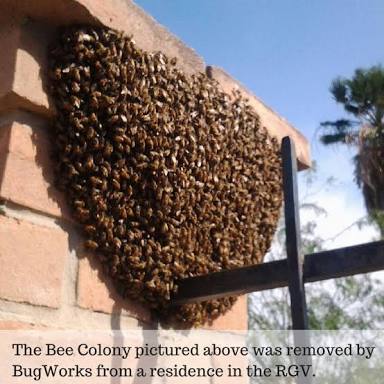KILLER BEE

The Killer Bee also known as ‘Africanized Honey Bee’.
In order to increase the production of honey these Bee are first introduced in Brazil in1950s. The scientists are produced these bee by cross-breading of South African honey bee and European bee.
But in 1957, 26 swarms are accedentally escaped from quarantine. Since then,the species has spread throughout South America and later arrived in North America in 1985. In USA first Hives were found in South Texas in 1990.
Since then, it causes many deaths year by year in America.
the bees' venom is no more toxic than that of the European honeybee. They are, however, known to sting many more times, with some victims receiving more than 1,000 stings. In addition to being a threat to humans, they are also relatively lousy at producing honey — making them a threat to agriculture as well.
Africanized bees have the same stinger as European bees-same amount of venom. However, killer bees are easily provoked and attack in army fashion-this is where their danger lies.
It takes a European roughly thirty seconds to sting; a killer bee can manage the task in about three seconds.
A single sting by an Africanized bee can set off an alarm to other bees provoking hundreds and eventually thousands or stings if the victim does not get away. The alarm is an odor similar to the smell of ripe bananas.
Africanized bees are ill at ease near people and animals. A sound or a strong perfume can easily set them swarming.
Scientists do not believe that killer bees are simply “mean;” they are more sensitive and more prone to defend their hives; they feel threatened quite easily.
A single colony of killer bees is likely to include 80,000 members.
The first U.S. town known to contain killer bees was Hidalgo, Texas. The town now refers to itself as “Killer Bee Capital of the World.”
As more bees breed there are increasing attacks on humans. One tip might be to never remove a colony near your home-call a bee removal service.
Bees tend to attack outdoors, but occasionally they invade houses-usually when they are swarming to find a new home.
If you live in areas where killer bees are known to live, avoid low-hanging branches. Be careful of holes in the ground; killer bees also build nests in such holes.
Most people can outrun bees-but run in a straight line and be prepared to run past that quarter mile mark. Never think you can fight them off. Cover your face which is a prime target for the bees.
.jpeg)
.jpeg)
Hi! I am a robot. I just upvoted you! I found similar content that readers might be interested in:
http://www.avivadirectory.com/trivia/75-cool-facts-about-killer-bees/
Downvoting a post can decrease pending rewards and make it less visible. Common reasons:
Submit